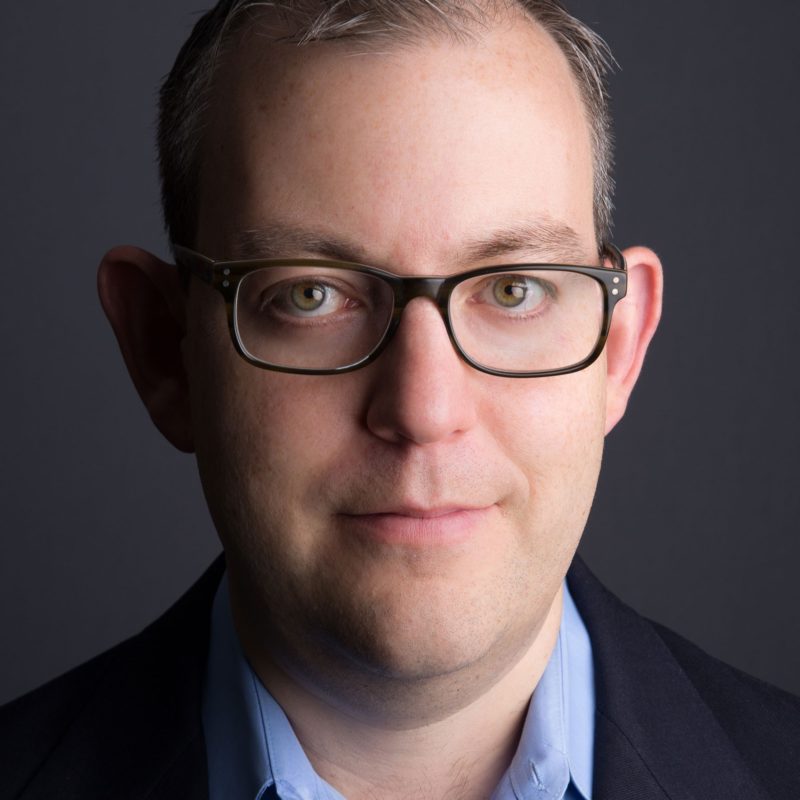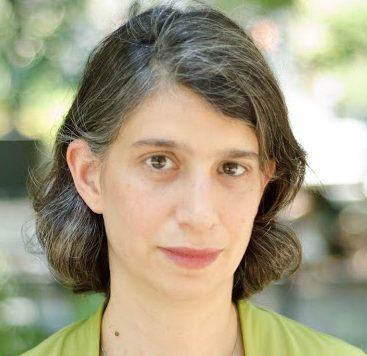EDITOR’S NOTE: Tomorrow we feature an interview with Max Blau, a local reporter who made a successful pitch to ProPublica, and an annotation of the pitch. Blau is now a staff reporter for ProPublica based in Atlanta.
Freelancers and community journalists dream of chasing down investigative stories instead of invoices and city council meetings. But carving out time to follow leads, and to establish the evidence necessary to convince a publication to provide the time and resources needed to do deep accountability journalism, can feel implausible. For independent journalists who get paid by the word, and staffers who work in shrinking newsrooms, the ability to make a living often correlates more with volume — not the depth — of the work produced.
In recent years, grant-making organizations, fellowships and newsroom partners are offering a path out of that rut. Few pack a heavier investigative punch than ProPublica. Since it launched in 2008, the nonprofit news organization has become a formidable hub for deeply reported, damning investigations that expose abuses, challenge power and change laws.

The first cohort of ProPublica’s Local Reporting Network (LRN) set out in 2018, as local news outlets across the country kept shuttering. The goal was to nurture ideas that people had in their notebooks but didn’t have the time or opportunity to pursue, says Charles Ornstein, managing editor for local at ProPublica. A few months earlier, ProPublica had launched its first regional reporting hub from Illinois. “It was sort of a ‘let many flowers bloom,’ approach to local news,” Ornstein says. “There was also a recognition that ProPublica by itself was not in a position to solve the crisis in local news. It’s a multifaceted, complex problem that looks different in different areas of the country.”
The local network — which pays reporters’ salaries for a year up to $75,000, with a stipend for benefits — has since cultivated 59 partnerships with 50 unique news organizations (a new group will begin in September). A series published by the Anchorage Daily News and supported by ProPublica, about the dirth of police protection in many of Alaska’s villages, earned a 2020 Pulitzer Prize for Public Service.

To gain that backing, staff or independent reporters can apply with the support of a local newsroom. ProPublica works to ensure that the full weight of its newsroom resources are available to support the locally-based reporters as they pursue their projects, says Sarah Blustain, deputy editor, local, at ProPublica. Blustain joined ProPublica in January 2021 after working at Type Investigations, Newsweek, the New Republic and other publications.
Storyboard spoke with Ornstein and Blustain about the application process and what they look for in proposals. Our conversation has been edited for length and clarity.
From conception to publication, I’d love to hear more about how the Local Reporting Network functions. How are projects initiated and how do they develop?
BLUSTAIN: We put out a call two to three times per year. We leave open the opportunity for people to send in drafts of their proposals early. Some member of our editorial team — it could be me or Charlie, or someone else — will read it and send feedback. This is intended to both strengthen the proposal — whether or not we take it on — and to make it more aligned with the criteria we’re looking for.
Once the winners are selected, then the really hard work starts. We have this story idea and now have to figure out the right approach. How are you going to do the data, if it’s a data story? How are you going to pursue the reporting? What’s the project arc going to look like? All those things are conversations the reporter will work out in conjunction with their editor at ProPublica and in their home newsroom.
What’s that three-way partnership like?
BLUSTAIN: Every newsroom is different, with different bandwidth and needs. That’s the starting point for all partnerships. There are some newsrooms where the partner editor is highly engaged in the process, and is on call every week. Editors are always consulted about where things are going, but there are newsrooms where editors are less involved in the day-to-day, for various reasons. Every work product that’s created is going to be approved by the local and our newsroom. We have certain skills around how to frame an investigative story that add to the project, but we don’t have the community knowledge that local editors have. Both elements are really important to putting together a story that will be meaningful in a local community and also nationally.
Related stories
When you’re reading proposals and giving feedback, or seeing a polished submission, which elements of a pitch suggest that a story could be a strong fit for ProPublica?
BLUSTAIN: The potential for impact is a big one. It can take a lot of different forms, but seeing a level of specificity in the projects that points toward the possibility of change is very appealing. Having a reporter who’s able to identify what has already been written in the space, and can clearly express how this advances the story, is an important element. And then also understanding what sources or types of sources reporters have access to — whether that’s data, human sources or other kinds of documents. You want to know that they have those resources in hand, or have the possibility of having them in hand.
ORNSTEIN: People are seeking the ability to spend a year working on a project. Coming into that, we don’t expect that they have already spent a year working on the project or the pitch. We know there are going to be things they don’t know and requests they want to put out. But we want to see that there is a high probability that their hunch or instinct of what’s happening is actually happening. We also want to make sure that it’s not something that can be told in any community across the country. We really ask the questions of, ‘Why does this story need to be told here, in this community?’ and, ‘Why does this story need to be told now?’”
When you’re in the feedback stage and have questions about a potential project, what puts you over the edge to convince you the story is worth pursuing? What revisions or additional steps do you like to see?ORNSTEIN: Some people have gone to the courthouse and pulled additional records, or they’ve called additional sources. We want to see that if you have an example of something that went wrong, it’s not an anomaly. Even the best institutions make mistakes; even the best-run governments do things that are not right. That doesn’t mean it’s a big investigation. We want to see that there’s more than just an isolated example — there’s material here that would enable you to keep pulling on the string. For some people, that may mean data. For some people, that may mean documents. For some people, that may mean sources. For some people, that may mean examples. It really looks different for different projects.
In terms of the track records of journalists you work with, do you partner with reporters who have not pursued long, ambitious investigative pieces before, but have a compelling idea? What makes you inclined to take a chance on a younger or newer reporter who might not have that ‘proof of concept,’ clip, but who wants to move into this space?
ORNSTEIN: We’ve worked with a huge range of reporters. We’ve worked with people who’ve won a MacArthur “genius grant,” like Jerry Mitchell and Ken Ward Jr., with people fresh out of Report for America, like Samantha Hogan in Maine, and everywhere in between. We want to see the strength of the idea and ability to pull that off. Experience is important, but it’s not the only factor.
What advice would you give to reporters who have the nugget of a compelling idea? How can they prove they’re capable of pulling it off?
BLUSTAIN: Reading investigative materials — understanding how they’re constructed and reflecting that in your proposal — is probably the single best way to dissect what an investigation is and then apply it to your work. As a reader of proposals for many years, I can also say that when I give feedback and a proposal comes back to me really well-refined, that’s an excellent sign that I’m going to have a good editorial dialogue with somebody. I asked for something and they went out and got it. They flipped this proposal upside down and twisted it around, and now it looks like what we were talking about.
What are some typical shortfalls you come across in first-round pitches?
BLUSTAIN: People identify something bad going on, but have no idea what’s behind it. The proposal comes in with a question, and ‘I want to investigate whether X, Y and Z is happening.’ That is an excellent first question, but when you’re in a year-long investigative project that has a deadline, you’re going to need to know more about the project than asking those initial questions.
ORNSTEIN: As we’ve noted before, for some folks, it’s, ‘Why does this story have to be told in your community and why does the story have to be told now?’ Problems with the criminal justice system, for example, are happening all across the country. Issues with extremism are happening all across the country. So why does the story have to be told in your jurisdiction? If you can’t answer that, it’s hard for us to accept a proposal.
If you want to submit a formal pitch after the initial proposal, what are the steps and what’s the timeline?BLUSTAIN: I’ll take our recent call for proposals as an example. It opened on June 3; the deadline to submit was July 5. But we looked at drafts submitted through June 21, a couple of weeks before the deadline, to give our editors time to read them and give applicants time to absorb that feedback. I for us to read through everything. We have committees of people reading proposals, asking good questions and narrowing down the pool.
What’s the ratio of proposals you receive to those you commission?
BLUSTAIN: We probably accept somewhere between five and 10 percent of applications in any given cycle. We stay in touch with folks as the process develops to let them know whether they are still in the running. For those who don’t get it, we let them know as well.
Any other advice you’d offer?
ORNSTEIN: If you’re not successful the first time, it doesn’t mean there isn’t merit to your idea. It doesn’t mean you won’t be successful the second time. We’ve had people who’ve applied four or five times before we’ve accepted one of their ideas. So don’t be discouraged. We like far more ideas than we have the capacity to fund, but stay in touch with us. Submit your ideas early in order to get feedback.
***
Carly Stern is a freelance reporter based in San Francisco who covers housing, disability policy, urban life and economic inequality.



